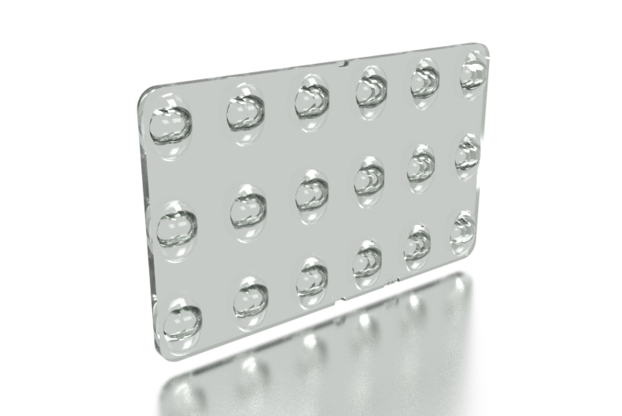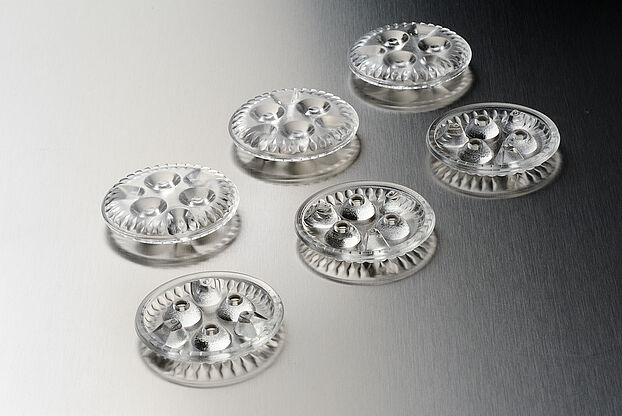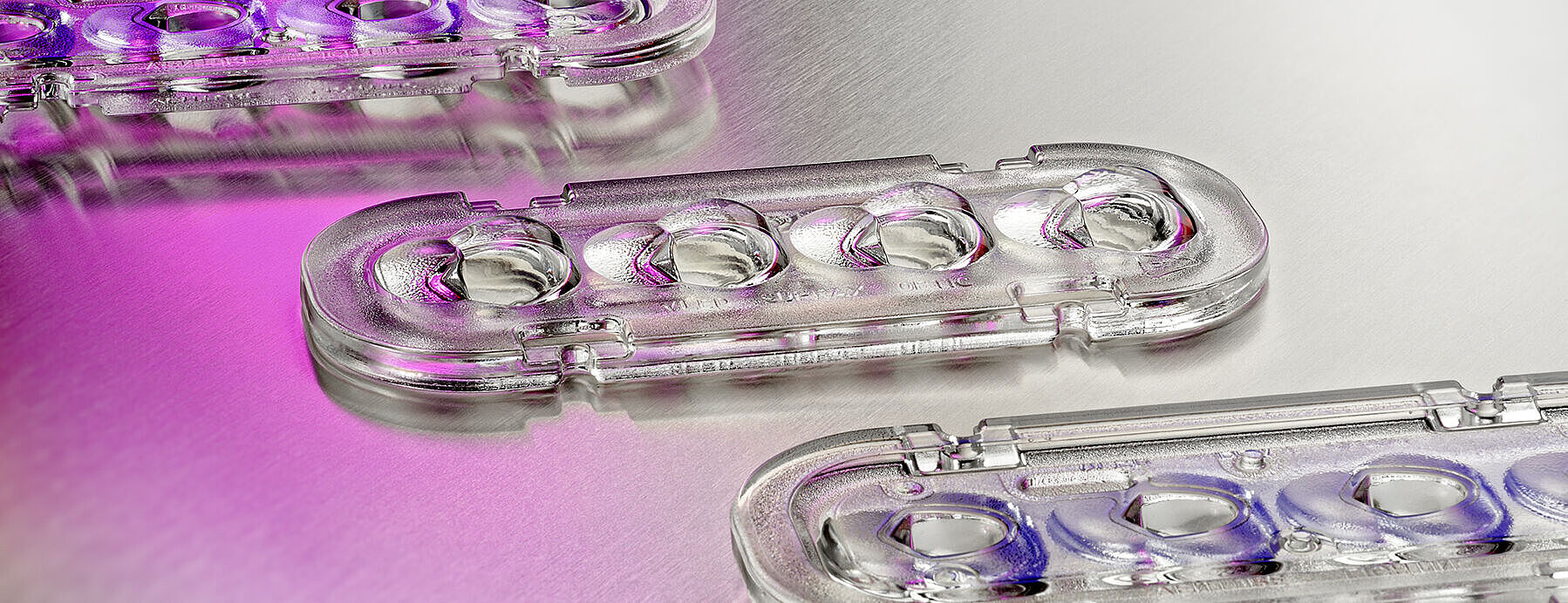For high lumen applications two different approaches are feasible: The first one – with CoB (Chip on Board) LEDs – uses larger areas densely packed with an array of many small LED dies. The size of the light emitting surface is determined by the required luminous flux and the flux density of a single LED die. Diameters of such CoB LEDs reach up to 30 mm, with several hundred watts of power. This large light emitting diameter has implications on the size of the optics and the field of application. We have designed a non-glare optics of 350 mm diameter that collects and collimates the emission of such an LED "beast" and throws it efficiently over large distances, predestining it for the use in sport arenas.
The second approach is the use of many distinct LEDs with individual optics. Here, the size of the optics is determined by the size of the single LED, typically in the range of a few millimeters. In the final application many sets of LED + optics are arranged in an array configuration. For easier system assembly the optics can be combined as a lens array (see picture above).
Typical applications of lens arrays require luminous fluxes above 10000 lm with a highly defined light distribution of the luminaire. Optics can be small for use in consumer electronics (~10 mm) or larger for use in street lighting, flood lights for sport arenas or architectural areas. The application may be non-rotational with defined illuminance distributions, like a homogenously illuminated square on a floor or wall (wash effect), but also completely asymmetric lighting.



